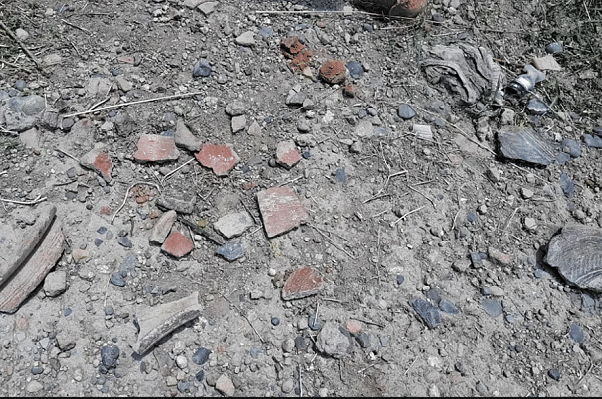News Brief
Maharashtra Archaeologist Discover Late Harappan-Era Artefacts At Virgin Site In Jalgaon
IANS
Jul 11, 2021, 10:54 AM | Updated 10:54 AM IST
Save & read from anywhere!
Bookmark stories for easy access on any device or the Swarajya app.


A Maharashtra archaeologist may have hit a jackpot by discovering several potteries and artefacts, dating back to the later era of the Indus Valley Civilization (IVC), at Yawal in Jalgaon district.
The finds are mainly big and small pieces of pottery and vessels, depicting Harappan-style pictographical scripts that excited the discovery team led by Bhujang R. Bobade, Director, Heritage Foundation.
"We found the pottery pieces in the white mounds near the entrance of the Nimbalkar Fortress, around 20 km from Bhusaval... It's a virgin territory, hitherto unexplored by any archaeologist," an enthusiastic Bobade told IANS from the site.
Scores of pottery pieces, which was the major industry during the IVC with its unique potteries like glazed, incised, perforated or knobbed, have been found in barely 500 sq ft area after the first dig at Yawal.
Bobade said that while most potteries of that era were plain, the others were uniquely painted with scales, chequers, images of trees, birds, animals or fish, mostly with plain bases and some with ringed bottoms.
The pottery pieces discovered here are mainly wheel-made wares, both plain (red clay, with or without a fine slip) and painted (in red and black colours), as was common in the flourishing IVC era over 3,000 years ago.
"Another unique thing here is that besides the ancient Harappan-style artefacts, we also found some pieces dating much later, to the medieval era, or 15th-16th AD. This is probably unprecedented anywhere in India," Bobade said.
He said the "twin discoveries" indicate that this particular region of north-Maharashtra was inhabited for an extended period, very long after the IVC faded away into the pages of history.
The Director of the Directorate of Archaeology, Tejas Garge, said that it could also date back to the Satavahana period, or roughly the time when the famous paintings were said to have been made in the Ajanta Caves, now a UNESCO World Heritage site.
Incidentally, the 76m long, 68m wide and 45m tall Nimbalkar Fortress, which stands near the site, was built by the local ruler, Rao Dhar Nimbalkar, in 1788 and at one time it was in the possession of the royal family of Gwalior, the Scindias.
However, several discoveries of bronze artefacts during excavations in 1958, 1974 and 1978 in Daimabad and Ahmednagar suggest that the late Harappan culture may have extended to this region of modern-day Maharashtra, said Bobade.
Nevertheless, the potters' wheels, which were made of wood, have not survived the ravages of time, but the remnants of their creations are found scattered here, over 1,000 km away from the heart of the Harappan Civilization.
The team members, including Bobade, Samadhan Mahajan, a government official, and his son Parth Mahajan, consider this as 'truly astonishing' and said this will need massive further excavations, study and research.
"Yet, it's still a mystery as to how such a large geographical area exhibited a uniform pottery tradition in forms, paintings and pottery designs similar to Harappa," Bobade said.
The IVC was at one point the largest ancient human civilisation in terms of its geographical spread, with a core area of over 1,500 km, along the 3,200 km-long Indus River system of north and north-west India before it drains into the Arabian Sea near Karachi, Pakistan.
Bobade is confident that after the latest discoveries in Jalgaon, the Archaeological Survey of India and other experts will carry out further excavations and investigations to reveal more of the ancient era to the modern world.
This news has been published via a Syndicated feed. Only the headline is changed.





